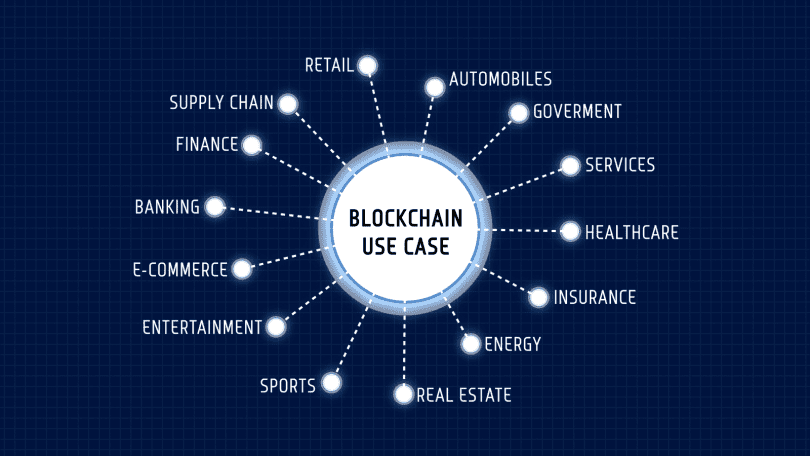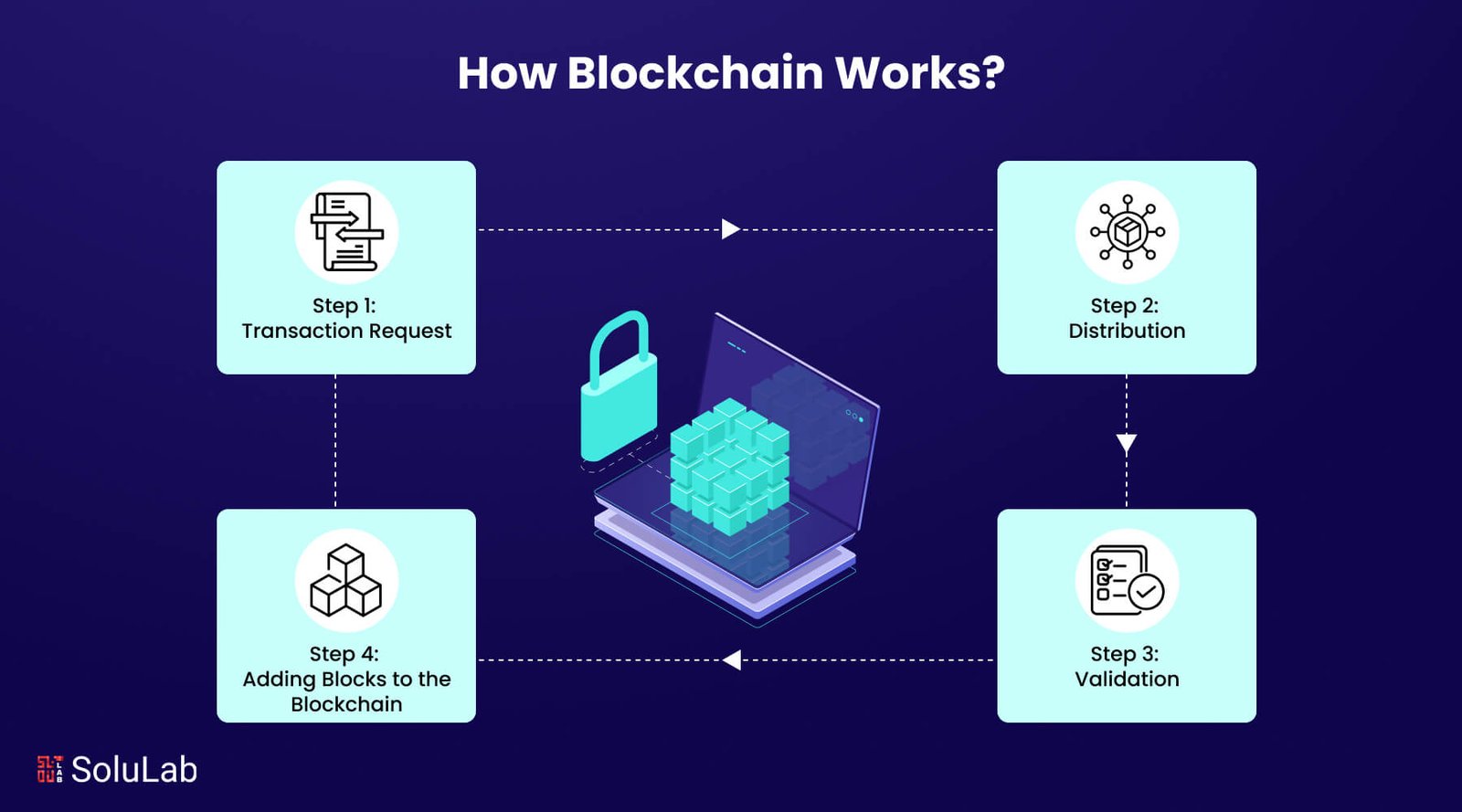“Why Everyone Is Talking About Blockchain— Here’s What You Need to Know!”
In recent years, blockchain technology has emerged as one of the most transformative innovations in the digital age. Originally designed as the foundational technology for cryptocurrencies like Bitcoin, blockchain has since evolved into a versatile tool with applications across various industries. Its potential to enhance transparency, security, and efficiency has captured the attention of businesses, governments, and technologists worldwide.

What is Blockchain?
At its core, blockchain is a decentralized, distributed ledger that records transactions across multiple computers. This technology operates on the principle of consensus, where transactions are verified and validated by network participants rather than a central authority. Once verified, transactions are added to a block, which is then linked to the previous block, forming a chain. Each block is secured using cryptographic algorithms, making the data immutable and highly secure.

Key Characteristics of Blockchain
- Decentralization: Unlike traditional systems that rely on a central authority, blockchain operates on a peer-to-peer network. This eliminates single points of failure and enhances system resilience.
- Transparency: All transactions on a blockchain are visible to participants, fostering trust and accountability.
- Immutability: Once data is recorded on the blockchain, it cannot be altered or deleted, ensuring data integrity.
- Security: Blockchain employs advanced cryptographic techniques to protect data, making it highly resistant to fraud and cyberattacks.
Blockchain Use Cases Across Industries
1. Financial Services
The financial sector was one of the first to embrace blockchain, using it to streamline processes, reduce costs, and enhance security. Key applications include:
- Cross-border Payments: Traditional international transactions can take days and involve high fees. Blockchain enables real-time, low-cost cross-border payments.
- Smart Contracts: These self-executing contracts automate agreement terms, reducing the need for intermediaries and minimizing disputes.
- Decentralized Finance (DeFi): By eliminating intermediaries, DeFi platforms provide financial services like lending, borrowing, and trading directly to users.
2. Supply Chain Management

Blockchain enhances transparency and traceability in supply chains. By providing a single source of truth, it allows stakeholders to track the origin, journey, and condition of products in real-time.
- Provenance Tracking: Consumers can verify the authenticity of goods, such as organic produce or luxury items.
- Anti-counterfeiting: Blockchain helps combat counterfeit goods by providing a verifiable digital record of a product’s lifecycle.
3. Healthcare
In healthcare, blockchain can address critical challenges like data interoperability, security, and patient consent management.
- Medical Records Management: Blockchain enables secure, interoperable electronic health records (EHRs), giving patients control over their data.
- Clinical Trials: Immutable records ensure the integrity of clinical trial data, enhancing trust in research outcomes.
- Pharmaceutical Supply Chain: Blockchain ensures the authenticity and safety of drugs by tracking them from manufacturer to end-user.
4. Government and Public Services
Governments are exploring blockchain to improve efficiency, reduce corruption, and enhance public trust.
- Digital Identity: Blockchain-based identity systems provide citizens with secure, verifiable digital IDs, reducing fraud.
- Voting Systems: Blockchain ensures secure, transparent, and tamper-proof elections.
- Land Registry: Immutable land records on blockchain reduce disputes and enhance transparency in property transactions.
5. Energy and Utilities
Blockchain facilitates the transition to decentralized energy systems and promotes sustainability.
- Peer-to-Peer Energy Trading: Homeowners with solar panels can sell excess energy directly to neighbors using blockchain.
- Carbon Credit Trading: Blockchain provides a transparent platform for trading carbon credits, helping organizations meet sustainability goals.

Challenges and Limitations of Blockchain
Despite its potential, blockchain faces several challenges that must be addressed for widespread adoption:
- Scalability: Current blockchain networks often struggle with high transaction volumes, leading to delays and increased costs.
- Energy Consumption: Proof-of-work (PoW) consensus mechanisms, used by some blockchains, consume significant energy, raising environmental concerns.
- Regulatory Uncertainty: The regulatory landscape for blockchain and cryptocurrencies is still evolving, creating uncertainty for businesses and investors.
- Interoperability: Different blockchain platforms operate in silos, limiting their ability to interact and share data seamlessly.
- User Adoption: The complexity of blockchain technology can be a barrier for users, necessitating more user-friendly interfaces and education.
The Future of Blockchain
The future of blockchain looks promising, with ongoing innovations addressing current limitations and unlocking new possibilities. Here are some key trends shaping the future of blockchain:
1. Layer 2 Solutions
Layer 2 technologies, such as the Lightning Network, aim to enhance the scalability of blockchain networks by processing transactions off-chain while retaining the security benefits of the underlying blockchain.
2. Green Blockchain Initiatives
To address environmental concerns, many projects are shifting from energy-intensive PoW to more sustainable consensus mechanisms like proof-of-stake (PoS). Ethereum’s recent transition to PoS is a notable example.
3. Interoperability Solutions
Projects like Polkadot and Cosmos are working on creating interconnected blockchain ecosystems, enabling seamless data sharing and collaboration across platforms.
4. Blockchain in IoT
The integration of blockchain with the Internet of Things (IoT) promises to enhance security and efficiency in IoT networks. Use cases include secure device communication, automated microtransactions, and real-time data sharing.
5. Central Bank Digital Currencies (CBDCs)
Many central banks are exploring or piloting blockchain-based digital currencies. CBDCs aim to combine the benefits of cryptocurrencies with the stability of traditional fiat currencies.

Conclusion
Blockchain technology has come a long way since its inception and continues to evolve rapidly. Its ability to enhance transparency, security, and efficiency positions it as a game-changer across various industries. However, realizing its full potential requires addressing challenges such as scalability, energy consumption, and regulatory uncertainty. As the technology matures, blockchain is poised to transform how we conduct business, manage data, and build trust in the digital world. For businesses and governments alike, the journey to a blockchain-powered future represents both a challenge and an opportunity.






